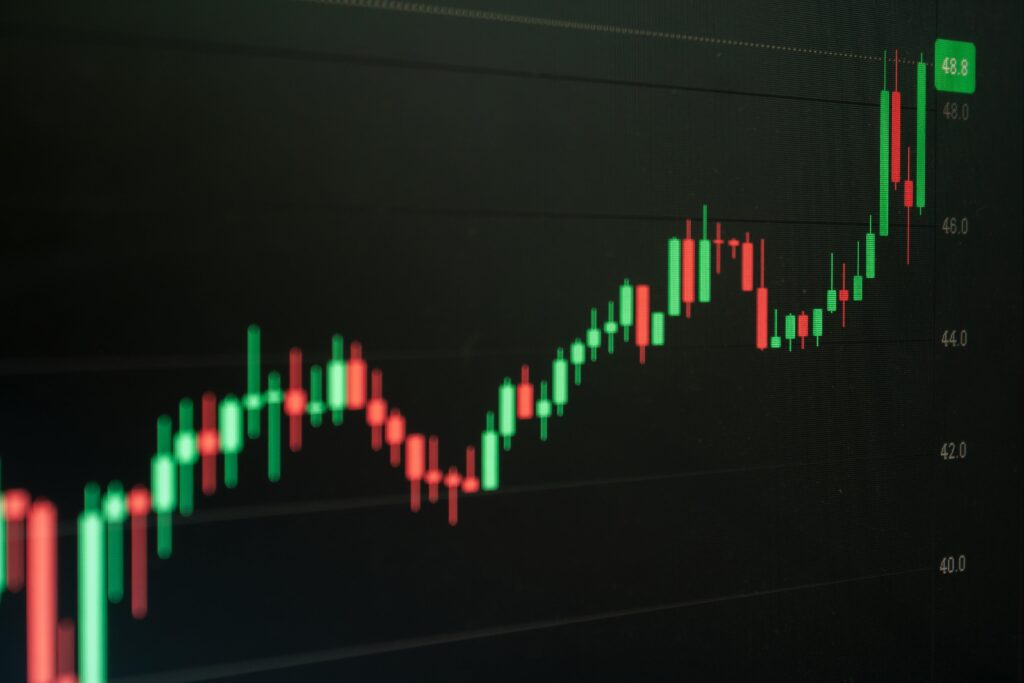What is the benefit of trend lines?
Up and down trends are hot topics among technical analysts and traders because they ensure that underlying market conditions are working in favor of a trader’s position rather than against it. Trend lines are easily recognizable lines that traders draw on charts to connect a series of prices. The resulting line is then used to give the trader a good idea of the direction in which an investment’s value may be moving. In this article, you will discover how to use this tool. It won’t be long before you’re drawing them on your own charts to increase your chances of making a successful trade.
Understanding trend lines
Understanding the direction of an underlying trend is one of the most fundamental ways to increase the likelihood of making a successful trade as it ensures that the general market forces are working in your favor. Downward sloping trend lines suggest that there is an excess of supply for the security, a sign that market participants have a higher willingness to sell an asset than to buy it. When you can see a downward sloping trend line is present, you should refrain from holding a long position; a profit on a move higher is unlikely when the overall long-term trend is heading downward. Also notice that there is a series of lower highs and lower lows, which is a characteristic of a confirmed downtrend. Conversely, an upward trend is a signal that demand for the asset is greater than supply and is used to suggest that the price is likely to continue moving upwards. Trend lines can vary drastically, depending on the time frame used and the slope of the line. For example, some securities may show aspects of upward/downward trends for months, days or even a few minutes, while others may become range-bound and trade within a sideways trend.
Support and resistance
Trend lines are a relatively simple tool that can be used to gauge the overall direction of a given asset, but, more importantly, they can also be used by traders to help predict areas of support and resistance. This means that trend lines are used to identify the levels on a chart beyond which the price of an asset will find it difficult to move. This information can be very useful for traders looking for strategic entry levels or can even be used to effectively manage risk, by identifying areas to place stop-loss orders. Technical traders pay particular attention to an asset when the price is approaching a trend line as these areas often play a large role in determining the short-term direction of the asset’s price. When the price approaches a major support/resistance level, there are two different scenarios that can occur: the price will bounce off the trendline and continue in the direction of the previous trend, or it will move through the trendline, which can then be used as a sign that the current trend is about to reverse or weaken.
Draw your own trend lines
As mentioned earlier, trend lines are simply lines that connect a series of prices to give the trader a better idea of where the price of a particular investment is headed. The problem comes with figuring out which prices are used to create the trend line. As you may know, the open, close, low and high prices are easy to get for most stocks, but which of these prices should be used when creating a trendline? There is no unequivocal answer to this question. Technical signals generated by the various technical patterns/indicators are highly subjective and trendlines are no exception. It is entirely the trader’s decision when it comes to choosing which points are used to create the line and no two traders will always agree to use the same points. Some traders will only connect closing prices while others may choose to use a mixture of close, open and high prices. Regardless of which prices are connected, it is important to note that the more prices that touch the trend line, the stronger and more influential the line can be assumed to be. In general, upward sloping trend lines are used to connect prices that act as support, while the given asset is trending upwards. This means that upward sloping trend lines are mainly drawn below the price and connect either a series of closes or periodic lows. Conversely, a downward sloping trend line is generally used to connect a series of closing prices or periodic highs, which act as resistance while the given asset is trending downwards. We should note that it is possible to use two trend lines on the same chart. However, this method, known as a channel, goes beyond the scope of this article. Once a trend line has been established, traders would expect to see the price of the asset continue to climb until the price closes below the newly formed support. Once a technical trader has entered a position near the trendline, they would keep the position open until the price moved below the trendline support. Most traders will constantly adjust their stop-loss orders by moving them higher, as the trendline continues to slope upwards. This method ensures that a trader can lock in as much of the profit as possible, without being taken out of the position prematurely. Holding a stop-loss order below an influential trendline is a strategic way to ensure that the asset has enough room to fluctuate, without being whipsawed. In this case, using the rising trendline as a guide for an expected move higher would result in a very profitable trade, as you can see below. Trend lines are often used by traders who are trying to ensure that the underlying trend of an asset works in favor of their position. Trend lines can be used effectively by traders to gauge potential areas of support/resistance, which can help determine the likelihood that the trend will continue. This strategic advantage is available to any trader who is willing to take the time to learn how to draw a basic trendline and incorporate it into their trading strategy. Although many traders will argue about which prices to use when creating the trendline, remember that everyone agrees that the strength of the trendline increases as more prices test the support/resistance.
About the Vikingen
With Vikingen’s signals, you have a good chance of finding the winners and selling in time. There are many securities. With Vikingen’s autopilots or tables, you can sort out the most interesting ETFs, stocks, options, warrants, funds, and so on. Vikingen is one of Sweden’s oldest equity research programs.
Click here to see what Vikingen offers: Detailed comparison – Stock market program for those who want to get even richer (vikingen.se)













